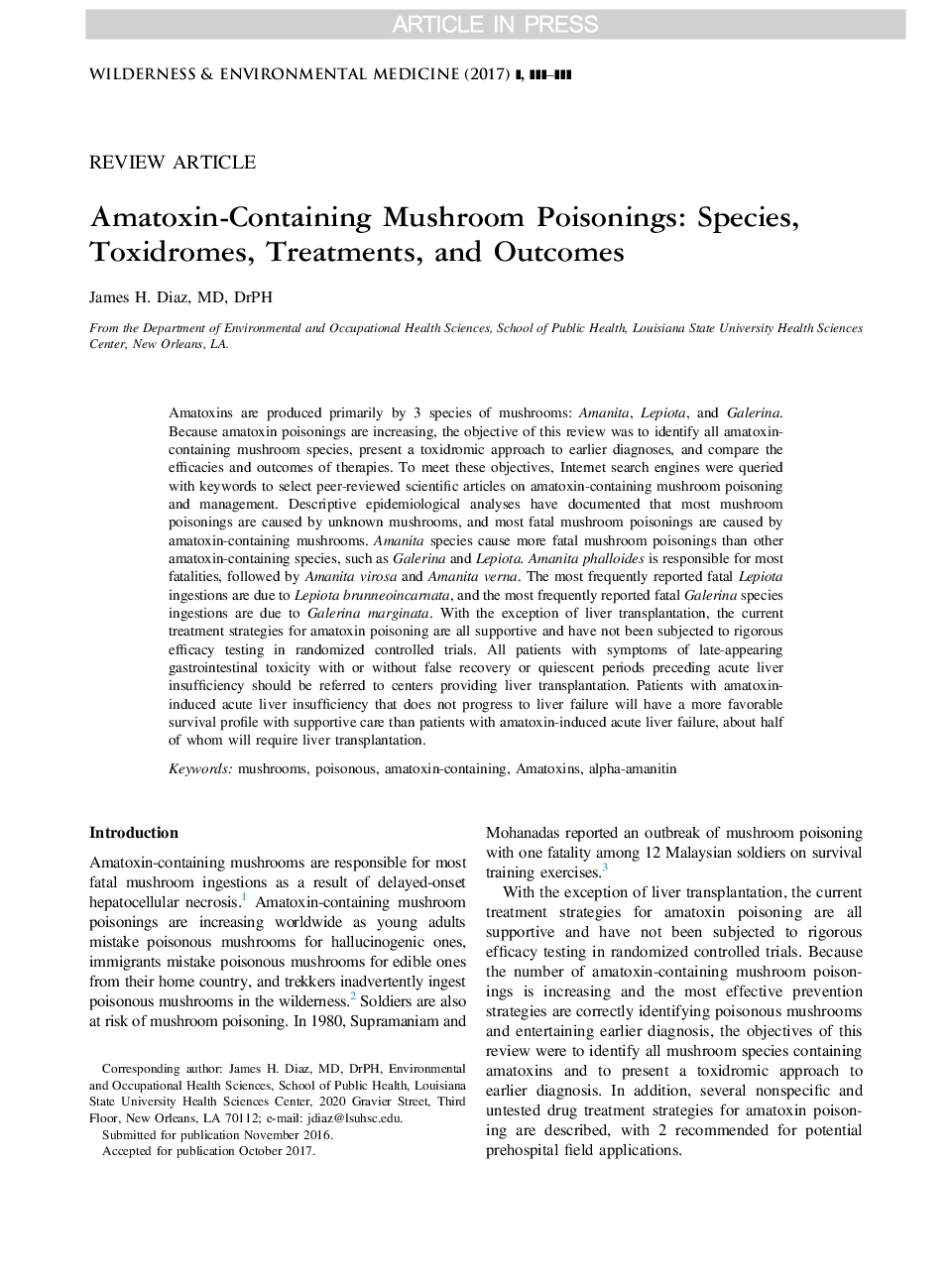| کد مقاله | کد نشریه | سال انتشار | مقاله انگلیسی | نسخه تمام متن |
|---|---|---|---|---|
| 8557973 | 1562907 | 2018 | 8 صفحه PDF | دانلود رایگان |
عنوان انگلیسی مقاله ISI
Amatoxin-Containing Mushroom Poisonings: Species, Toxidromes, Treatments, and Outcomes
ترجمه فارسی عنوان
مسمومیت قارچ حاوی آماتوکسین: گونه ها، توکسیدروم ها، درمان ها و نتایج
دانلود مقاله + سفارش ترجمه
دانلود مقاله ISI انگلیسی
رایگان برای ایرانیان
کلمات کلیدی
قارچ، سمی، آماتوکسین حاوی، آماتوکسین ها، آلفا آمینیتین،
موضوعات مرتبط
علوم پزشکی و سلامت
پزشکی و دندانپزشکی
طب اورژانس
چکیده انگلیسی
Amatoxins are produced primarily by 3 species of mushrooms: Amanita, Lepiota, and Galerina. Because amatoxin poisonings are increasing, the objective of this review was to identify all amatoxin-containing mushroom species, present a toxidromic approach to earlier diagnoses, and compare the efficacies and outcomes of therapies. To meet these objectives, Internet search engines were queried with keywords to select peer-reviewed scientific articles on amatoxin-containing mushroom poisoning and management. Descriptive epidemiological analyses have documented that most mushroom poisonings are caused by unknown mushrooms, and most fatal mushroom poisonings are caused by amatoxin-containing mushrooms. Amanita species cause more fatal mushroom poisonings than other amatoxin-containing species, such as Galerina and Lepiota. Amanita phalloides is responsible for most fatalities, followed by Amanita virosa and Amanita verna. The most frequently reported fatal Lepiota ingestions are due to Lepiota brunneoincarnata, and the most frequently reported fatal Galerina species ingestions are due to Galerina marginata. With the exception of liver transplantation, the current treatment strategies for amatoxin poisoning are all supportive and have not been subjected to rigorous efficacy testing in randomized controlled trials. All patients with symptoms of late-appearing gastrointestinal toxicity with or without false recovery or quiescent periods preceding acute liver insufficiency should be referred to centers providing liver transplantation. Patients with amatoxin-induced acute liver insufficiency that does not progress to liver failure will have a more favorable survival profile with supportive care than patients with amatoxin-induced acute liver failure, about half of whom will require liver transplantation.
ناشر
Database: Elsevier - ScienceDirect (ساینس دایرکت)
Journal: Wilderness & Environmental Medicine - Volume 29, Issue 1, March 2018, Pages 111-118
Journal: Wilderness & Environmental Medicine - Volume 29, Issue 1, March 2018, Pages 111-118
نویسندگان
James H. MD, DrPH,
